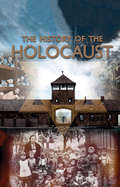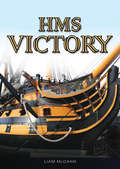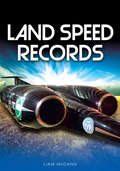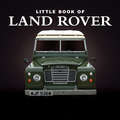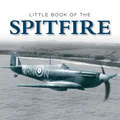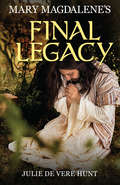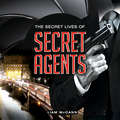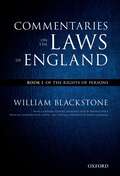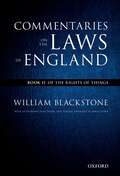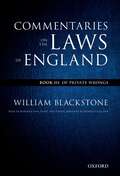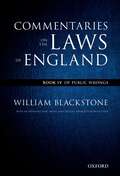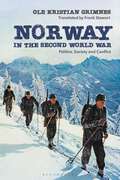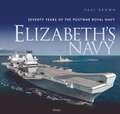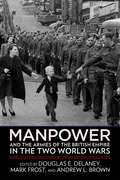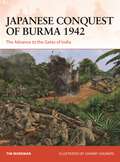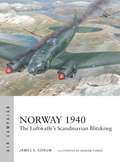- Table View
- List View
عنترة بن شداد الجزءالثاني
by مجهولوكان بسطام قويًّا قلبه، وأراد أن يطلق رأس الجواد، فما مكنه عنتر بن شداد، بل أدركه وزعق فيه وطعنه بعقب الرمح فألقاه على وجه الأرض، وقال لأخيه شيبوب: شد كتافه حتى ننظر ما يجري بيننا وبين القادمين، فنظر نجاد إلى هذا الحال، فقال لمن معه: يا ويلكم، خذا هذا الأسود ابن ملكنا بسطام وشداه في الاعتقال، وإني أقول إنه ما قدر عليه إلا من خوفه من هذه الفرقة العبسية التي لحقت بصاحبها، حتى تعينه على هذه القضية، كما لحقنا نحن صاحبنا فدونكم وإياهم، فارفعوهم على أسنة الرماح وأنا أمزق جسد هذا الأسود، وأطلق لمولانا السراح لأني أقول: إن هذا الفارس هو عنتر، الذي قد سار بسطام ليأتي برأسه، ثم إنه حمل يطلب عنتر في خمسين فارسا، وحملت بقية الثلاثمائة فارس على عمارة ورفقته مثل السود القناعس، وقد قلوا في أعينهم وداروا بهم وتفرقوا كراديس ومواكب، فعند ذلك لزم بنو عبس القتال خوفًا من المهالك، فانظر أيها السامع إلى هذه الأشياء التي تحير العقول، فإن عمارة قد أتى يقاتل عنتر فصار معينا له بغير علمه واختياره، واحتاج أن يقاتل معه، ويخلص نفسه فزعا من العطب، ولو أمكنه الهروب من ذلك لهرب، ولكن ما قدر على ذلك لأن الأعداء قد أحدقت بهم من سائر الجهات والممالك، فقاتل وبذل المجهود وتزاعقت عليهم الفرسان مثل الأسود، وتواثبت الشجعان مثل الفهود، واقشعرت الجلود، وقدحت حوافر الخيل النار في الجلمود، وخيم الغبار على رأسهم حتى بقي مثل الرواقي الممدود، وفاضت الدموع على الخدود، وقدت الصوارم الهامات والقدود، وخفقت الرايات والبنود، وتلهجت في الأحشاء نار الحقود، وعادت وجوه الأبطال سود، من كثرة الغبار الممدود، ومما جرى عليها من نقض المواثيق والعهود، وشربت الأودية من أدمية الفرسان والكبود، وخسرت بنو زياد في ذلك اليوم المشهود، ورأت مقام عنتر في ذلك الوقت محمود، وأيقن عمارة أنه هالك من بين أهله ومفقود، وكاد أن يموت من الحسد، وعاد متنغصا مكمود، ثم إنه افتقد أصحابه فوجدهم قد فقد منهم خمسون فارسا، والباقون أشرفوا على الهلاك، فعندها قال عمارة: النجاة، ثم إنه لوى عنان جواده وولى هاربا، فتبعه عروة ومن بقي من رجاله، وهم لا يصدقون بالنجاة.
سيرة الظاهر بيبرس المجلد الثاني
by مجهول(قال الراوي) فقال الملك سامحك الله بما فعلت من ذلك ولكن لا بد من التحقيق بينكما وما يكون الرأي في ذلك الركبة فقال يا مولاي اعلم أن الأعجام واثقين مني ولكن أنت رجعت إلى العرض وأنا رجعت إليهم وأقبل الليل بالاعتكار أرسل إلى أخواتي الفداوية وأنا أكون معاونًا لهم على كبس الركبة ونهب الأعادي فقال الملك هذا هو الصواب والأمر الذي لا يعاب ثم رجع إلى مكانه بعد أن تودع السلطان منه وعاد بيبرس وقد اجتمع برشيد الدولة وأعاد عليه سرًا بينه وبينه ففرح رشيد بذلك الخبر وتهلل وجهه واستبشر ثم أخذه ودخل على القان هلاون وقال له اعلم أن بيبرس العجمي قد تحارب مع قان عرب وكان مراده أسره فلم أمكنه ذلك ولكن لا بد أن يأسره غدًا إن شاءت النار فقال اللمين قوم بلاه ثم إنهم صبروا إلى الليل وقد نامت الأعاجم وهم آمنين من حوادث الزمان وما خبئ لهم عند مدبر الأكوان حتى توسط الليل فبينما هم في ألذ ما يكون من المنام وإذا بالصياح قد أخذهم من سائر الأقطار ووقع فيهم القتل السيف البتار فلا أحد قدر أن يثور من مكانه حتى طارت رأسه عن أبدانه وربما كان الرجل منهم إذا أخذ سلاحه قتل به أخاه وأعدمه الحياة ومنهم من كان متجرد بغير حسام وصارت المجوس شنيارها معكوس وجيشها مكبوس وعمل فيهم السيف والدبوس ولمعت السيوف في غياهب الملموس وزهقت النفوس وجرى الدما من الرجال مثل ذبح النيوس وعاد صباحهم معكوس وعمل فيهم البتار وقد اشتعلت نار الحرب إشعال وتحندل الأفيال وجرى الدما وسال فلا كنت تسمع للسيوف إلا الرنين ولا للمجاريح إلا الأنين وأخذهم السيف من الشمال واليمين وضاق عليهم البر الفسيح وتعاووا مثل عي الذبيح وضاق الخناق وشربوا من الموت أمر مذاق ووقف الحرب على قدم وساق وتعلقت الفرسان الفرسان والشجعان وطارت الرؤوس من الأبدان وزهقت النفوس من شدة الولهان وشيب الشجاع المصان وولى الجبان المهان وصار الدم ينزل والسيف يعمل ونار الحرب يشعل وكانت هذه الواقعة لا يعرف لها أول من آخر (يا سادة) وكان السبب في ذلك سبب عجيب وهو أنه لما رجع الملك من الميدان أخبر الوزير بما دار بينه وبين بيبرس من الكلام.
عنترة بن شداد الجزء الأول
by مجهولوكان بسطام قويًّا قلبه، وأراد أن يطلق رأس الجواد، فما مكنه عنتر بن شداد، بل أدركه وزعق فيه وطعنه بعقب الرمح فألقاه على وجه الأرض، وقال لأخيه شيبوب: شد كتافه حتى ننظر ما يجري بيننا وبين القادمين، فنظر نجاد إلى هذا الحال، فقال لمن معه: يا ويلكم، خذا هذا الأسود ابن ملكنا بسطام وشداه في الاعتقال، وإني أقول إنه ما قدر عليه إلا من خوفه من هذه الفرقة العبسية التي لحقت بصاحبها، حتى تعينه على هذه القضية، كما لحقنا نحن صاحبنا فدونكم وإياهم، فارفعوهم على أسنة الرماح وأنا أمزق جسد هذا الأسود، وأطلق لمولانا السراح لأني أقول: إن هذا الفارس هو عنتر، الذي قد سار بسطام ليأتي برأسه، ثم إنه حمل يطلب عنتر في خمسين فارسا، وحملت بقية الثلاثمائة فارس على عمارة ورفقته مثل السود القناعس، وقد قلوا في أعينهم وداروا بهم وتفرقوا كراديس ومواكب، فعند ذلك لزم بنو عبس القتال خوفًا من المهالك، فانظر أيها السامع إلى هذه الأشياء التي تحير العقول، فإن عمارة قد أتى يقاتل عنتر فصار معينا له بغير علمه واختياره، واحتاج أن يقاتل معه، ويخلص نفسه فزعا من العطب، ولو أمكنه الهروب من ذلك لهرب، ولكن ما قدر على ذلك لأن الأعداء قد أحدقت بهم من سائر الجهات والممالك، فقاتل وبذل المجهود وتزاعقت عليهم الفرسان مثل الأسود، وتواثبت الشجعان مثل الفهود، واقشعرت الجلود، وقدحت حوافر الخيل النار في الجلمود، وخيم الغبار على رأسهم حتى بقي مثل الرواقي الممدود، وفاضت الدموع على الخدود، وقدت الصوارم الهامات والقدود، وخفقت الرايات والبنود، وتلهجت في الأحشاء نار الحقود، وعادت وجوه الأبطال سود، من كثرة الغبار الممدود، ومما جرى عليها من نقض المواثيق والعهود، وشربت الأودية من أدمية الفرسان والكبود، وخسرت بنو زياد في ذلك اليوم المشهود، ورأت مقام عنتر في ذلك الوقت محمود، وأيقن عمارة أنه هالك من بين أهله ومفقود، وكاد أن يموت من الحسد، وعاد متنغصا مكمود، ثم إنه افتقد أصحابه فوجدهم قد فقد منهم خمسون فارسا، والباقون أشرفوا على الهلاك، فعندها قال عمارة: النجاة، ثم إنه لوى عنان جواده وولى هاربا، فتبعه عروة ومن بقي من رجاله، وهم لا يصدقون بالنجاة.
سيرة الأميرة ذات الهمة وولدها عبدالوهاب - جزء1
by ليس موجودقال الراوي: ومن جملة من خرج إليه عمرو بن عبد الله وهو يقول ادع لنا يا أخينا في الله، وأما أبا محمد البطال لما رأى الناس يهرعون سأل عن ذلك، فقال له بعض الإخوان فاز بالسعادة من فاز هذا القاضي قد قدم من أرض الحجاز فسار أبي محمد البطال من جملة الناس إلى أن وصل إليه، فرآهم يقبلون قدميه والشاطر من يصل إليه، وهو يبكي فما زال البطال يضحك إلى أن قرب منه، ووقعت عينه عليه فقال عقبة يا ولد يا بطال العاقبة إليك نزور البيت العتيق، وتزول عنك الذنوب، ويصل إليك التوفيق وتعاين ذاك المكان تحقيق، فقال البطال والله يا قاضي ما أنا إلا زرت البيت الذي كنت فيه، لكن ما غطست في جرن البركة الذي أنت غطست فيه، فقال عقبة وقد عدم رشاده وخفق من ذلك فؤاده، ويلك يا بطال إيش هذا الكلام وهذا الفضول الذي تقوله، وإذا بالأمير عمرو بن عبد الله قد وصل، فقال يا ولدي يا عمرو والله يوصل إليك ما دعوت لك في صحيفتك من الدعاء في البيت الحرام وزمزم والمقام، ثم ركب على ظهر بغلته بعد السلام والناس من وراه منقلبة، وكان البطال لما وقع بالقنديل قدمه للأمير عبد الوهاب، ففرح به فرحًا شديدًا ما عليه من مزيد، وكان البطال كره المقام بين بني سليم، وقال وحق المصطفى لا أقمت في مكان فيه عقبة بعد أن رأيت بعيني ما فعله، ولا بد أن أكون لهلاكه سبب، وأنحره كما أنحر الغنم، ثم طلع إلى قلعة الكوكب وأطلع الأميرة على القنديل، وقال هذا الذي تأسفتي عليه، وطلبتيه من الملك العلام، بأن يكون معلق في البيت الحرام، ثم حدثهم بحديث عقبة وما جرى له فقالت الأميرة لا حول ولا قوة إلا بالله العلي العظيم، وصعب على الأمير عبد الوهاب وقال للبطال على ماذا عولت أن تفعل، فقال انتقل من عندكم وأجعل معولي على الله، ثم عليكم وأنحر هذا اللعين فإني سمعته يوعد كلب الروم بهلاكك ويجعل بلاد الإسلام للروم والكفرة اللئام، ويملك البيت الحرام فقال عبد الوهاب ساءت ظنونه وأعماله وقطعت أوصاله ولا بد لي إن شاء الله أن أصلبه على باب الذهب الذي تنصر فيه، ولو احتمى بكل من كفر، وما قدر هذا الكلب إلا كلب حتى يذكر بيت الله الحرام، وزمزم والمقام، وأنت أخي من الدنيا والآخرة، لك ما لي وعليك ما عليَّ، ثم إنه أمر غلمانه أنهم ينقلون أسباب البطال من ملطية إلى قلعة الكوكب، وكانت ثلاثة جوار روميات وعشرة غلمان والكل علمهم الاحتيال والخداع، وجرأهم على الأهوال وأقام البطال في قلعة الكوكب وأعلم الأمراء بإسلام مارس ودارس، وأختهم أرمانوسة، ففرحوا بذلك فرحًا شديدًا ما عليه من مزيد، وقالت الأميرة سبحان الله من أيقظ هؤلاء من سنة الغفلة وأضل عقبة من علمه وفضله، ولكن الله يفعل ما يشاء ويحكم ما يريد، ولم يزل البطال في قلعة الكوكب إلى أن سمع بوصول عقبة، فقال لا بد لي من الخروج إليه، ثم إنه خرج كما ذكرنا وكلم عقبة بما وصفناه، وعاد البطال إلى قلعة الكوكب وأعلم الأمير بقدوم عقبة، وكيف وصل من الحجاز، فقالت الأميرة إن قتله عند الله أعظم أجر من فتح القسطنطينية، لأنه يلعب بالأديان ويكفر بالرحمن، ثم أقاموا إلى أن أصبح بالصباح، وإذا برسول الأمير عمرو وصل إليهم يطلب الأمير أبو محمد البطال، وأيضًا يطلب القنديل ويأخذ من البطال حق القصاص بما يتكلم في حق عقبة ويقابله بما يستحقه، وأما القنديل يوصله إلى الأمام فإنه ولي الأحكام. قال الراوي: وكان السبب في ذلك الملعون عقبة لأنه لما وصل إلى ملطية وعلم أن البطال شنع عليه بهذه الأقوال الرديئة، وأيضًا بالغ في تشديد هذه القضية، وأنه اطلع على تنصره فقال أنا اعلم أن هذا الصبي يكشف سري بما رأى مني، فلم ينم تلك الليلة حتى ملأ قلب عمرو بن عبد الله، وقال له يا ولدي أنت هاهنا ملك العربان وأمير الثغور في كل مكان، وما نريد يتم أمر إلا ونعلم به الخليفة أمير المؤمنين، وإلا إن دمت هكذا انتقصت منزلتك عند الأمراء وعند الخاص والعام، وأيضًا تستطيل بني عامر وبني كلاب على بني سليم، وما ينبغي أن تكون بني سليم تحت الذل والضيع، وينبغي أنك ترسل تطلب القنديل لأن البطال دخل إلى القسطنطينية وسرق مالاً جزيلاً، ومن جملته ذلك القنديل وهو من الصواب إنك تطلبه وتطلب أيضًا البطال حتى أنه يقوم إليَّ ذليل، وأقبح بما قال في حقي لأنه رماني بالزور والبهتان، وتكلم في حقي بالكفر والطغيان، وسوف يكون لهلاكه سبب، وإذا لم نقيم ناموس الإمارة وإلا حلت بنا كل الخسارة.
Talking Books: Pioneering and Beyond
by Marilyn Lundell MajeskaAlthough libraries had been finding ways to serve blind patrons as early as the late nineteenth century, the passage of the Pratt-Smoot Act in 1931 was a game-changer. Congress appropriated funds to provide books for blind adults, and the National Library Service for the Blind and Physically Handicapped was established. The five decades after Pratt-Smoot saw many technological developments in recording machines and techniques, some coming hand in hand with innovations in the music industry: from record players, to reel-to-reel tapes, to cassette players. Inevitably, the "talking books" program would always be a compromise between the best possible product and the limitations of what was practical and economically feasible. Author Majeska synthesizes information from interviews and old files to compile a detailed history of talking books from 1932 to 1988--before computers changed the whole scene.
Apostle to Mary Magdalene
by Julie De Vere HuntAlludes to the premise that Mary Magdalene was a former prostitute and had a child by Jesus. Ties in with a new blockbuster film of Mary Magdalene starring Rooney Mara and Joaquin Phoenix. Released on the day after the Feast Day of Mary Magdalene on July 22 officially recognised by the Vatican since 2016! No woman in the history of Christianity has captured the imagination more since the publication of Dan Brown s novel the Da Vinci Code brought her back into our consciousness. Repentant sinner, bride of Jesus, mother, teacher, healer and priestess.... these are just some of the roles ascribed to her. De Vere Hunt started hearing an inner voice and several events led her to believe it was Mary Magdalene, urging her to write this book. In an easy-to-read A-Z format, de Vere Hunt provides an overview of what little we do know about her from religious scholars gleaned from both the New Testament Gospels and the Gnostic Gospels relatively recently. The author touches on quantum physics and discusses metaphysical phenomena such as the Akashic Records, Cellular Memory, Meditation and the Zero Point Field as an additional source to establish the truth. Through her inner voice and access to the Akashic Records de Vere Hunt draws her own conclusions about the myths and legends surrounding Mary Magdalene. The revelations will seem at best unbelievable and even heretical to some, but historically only what we don t understand is ascribed to magic/witchcraft. Many major discoveries have been met with violent opposition as they contravene our belief systems. De Vere Hunt is confident her theories will be borne out by quantum physics in the fullness of time. Controversy is preferable to lack of interest or apathy and brings Mary Magdalene back into our consciousness to enable her to fulfil her role in present day. Mary Magdalene is here in our midst now to help us make the transition into the Age of Aquarius where the Divine Feminine and Divine Masculine will stand side by side in equal partnership and enable us to live in a better world. De Vere Hunt gives practical suggestions as to how we can all experience heaven on earth and give us hope for a better future.
Diego Maradona: 1960 - 2020
by Harry HarrisThe death of Diego Maradona in November 2020 shocked the football world but he left behind a unique legacy following a playing career packed with amazing moments on the pitch and controversy off it.Award-winning football journalist Harry Harris gives his personal perspective on Maradona's life story as one of only a few British writers to have been granted access to arguably the world's greatest ever player.He is helped by World Cup winner Ossie Ardiles who was a close friend of Diego's for most of his life having first seen the boy wonder at close quarters performing football tricks in the warm-up at an international match in 1975 before Diego became a regular in the Argentina side. Harry has captured Ossie's personal recollections of his close friend in graphic detail, and has also compiled a selection of all the worldwide tributes that poured in after his death.As the Daily Mirror chief football writer and one of the most prominent sports journalists of his generation, Harris followed Diego's career with first-hand knowledge and experience. He was present in the Azteca stadium when Maradona scored the most controversial and then the greatest goal in World Cup history and was also at the press conference in Dallas in 1994 following a positive drug test.Harry is one of the few global journalists afforded a one-to-one interview with Diego and he gives an account of the remarkable and incredible personal circumstances surrounding that exclusive interview.
England Players' Records: 1872 - 2020
by Graham BettsIt has been some ten years since the first edition of England Players’ Records was published, during which time more than 100 players have been capped for the national side on at least one occasion. During that same time frame, no fewer than five players have joined the exalted ranks of centurions by winning their one hundredth cap. Now comprehensively updated, the book contains details of each and every footballer who has played for England, 1235 in total, including all the squad players who took part in the FIFA World Cup in Russia under new manager Gareth Southgate. Compiled by Graham Betts, the leading expert on England’s football team, the Players’ Records includes a foreword by World Cup winning full-back George Cohen who celebrated his 80th birthday in October 2019.
The History of the Holocaust
by Pat MorganFor 12 long years between 1933 until 1945, the inhuman Nazi regime in Germany waged a brutal, pitiless war on groups of people whom they considered inferior. Jews, Roma, Slavs, the disabled and homosexuals, as well as political opponents and religious enemies, were among the victims of what would become known as the Holocaust. Jews, whom the Nazis believed had been the authors of their country's downfall, were particular targets.At first through discrimination and persecution but later through violence, enslavement and mass murder, Hitler's henchmen and women carried out a merciless attempt to exterminate an entire people. Mobile squads of killers roamed eastern Europe seeking out their prey. Then, in a grisly attempt to industrialise the process of genocide, the Nazis opened up their death camps. Hundreds of thousands of men, women and children passed through the gates of camps such as Auschwitz-Birkenau and Treblinka. Hundreds of thousands never came out. The first of the death camps was liberated in 1944 and the unimaginable truth of the atrocities of the Holocaust began to emerge in 1945. But it was not until the 1960s that the scale and meaning of the years of murder began to be truly appreciated in the western world. Seventy years on from the liberation, it is time to reassess one of the most infamous episodes in mankind's history.
HMS Victory
by Liam McCannThe Royal Navy’s defining moment came at the Battle of Trafalgar in 1805. Thirty-three British ships under Admiral Horatio Nelson faced 41 ships of the combined French and Spanish navies off the southwest coast of Spain. Nelson shunned conventional naval tactics, which dictated lining your fleet up oppose the enemy and then pound them into submission. Instead, he divided his ships into two lines and drove them through the opposition at right angles in a manoeuvre known as crossing the T. It gave the French and Spanish an early advantage in that their ships could train all their portside guns at the Royal Navy but, as soon as their battle line had been crossed, Nelson opened up from both flanks and tore into the enemy fleet. The French and Spanish lost 22 ships and 14,000 men, while Nelson lost no ships and little more than 1,000 men. It was such a decisive engagement that it secured British naval supremacy until the middle of the 20th century. Nelson’s flagship at the battle was HMS Victory. This is her story written by acclaimed historian Liam McCann.
Land Speed Records
by Liam McCannIn 1886 German engineer Karl Benz invented a petrol-powered automobile that became the first production motor vehicle. Steam and electric cars already existed but they were slow and cumbersome, and the internal-combustion engine revolutionised the industry. Only a decade or so later, drivers of all three types of car were battling for the outright speed record but progress was slow and it took until 1904 before Frenchman Louis Rigolly reached 100mph.By the 1920s, motor racing had entered a golden age and stars like Sir Henry Segrave, John Cobb and Sir Malcolm Campbell all built dedicated land speed record cars in pursuit of sporting immortality. Competition was stiff, particularly from the United States, and by the 1960s the Arfons brothers and Craig Breedlove were using jet power to reach speeds of 600mph on the Bonneville Salt Flats.In 1983 Richard Noble recaptured the record for Britain in Thrust 2. Fourteen years later, RAF pilot Andy Green became the first man to drive faster than sound in Thrust SSC at the Black Rock Desert in Nevada. Today, at least eight teams are developing cars to run at more than 1,000mph. This book chronicles the record from humble beginnings to the supersonic records of tomorrow.
Little Book of Camper Van
by Charlotte MorganLittle Book of Camper Van, a 128-page hardback book that looks back at the development of one of the most quirky and unique vehicles to have been manufactured, has sold more than 50,000 copies since its launch in 2009. Anyone who has ever driven a Volkswagen Camper will appreciate the appeal of this unique vehicle with its styling and versatility. It has given birth to a raft of products and apparel over the last few years including posters, mugs, money boxes and much more. This is a fascinating look at a cultural icon.
Little Book of Land Rover
by Charlotte MorganLittle Book of Land Rover takes a trip down memory lane and remembers the models that drove their way into the Nation s hearts.. Foreword by motoring historian Stephen Vokins, archivist at the National Motor Museum, Beaulieu, and one of the foremost authorities on the story of the legendary marque. Launched in 1948 the Land Rover had some unexpected owners including King George VI and Winston Churchill and once the British Army embraced it as their vehicle of choice, the Land Rover s place in motoring s hall of fame was secured The story started with the Series 1, but the family expanded with the arrival of the Range Rover, Defender, Discovery and Freelander not to mention the purpose-built variations for the military and emergency services so come on a journey to relive the birth of the 4 X 4. This is a fantastic 128-page hardback book celebrating one of the most iconic motoring brands in the world that celebrated its 60th anniversary in 2008.
Little Book of Spitfire
by David CurnockIn the history of the aeroplane there is one aircraft that is fully deserving of the accolade legendary". Little Book of the Spitfire written by David Curnock tells its' story. Against overwhelming odds in the Battle of Britain, and taking part in major actions in every operational theatre in World War 2, the Spitfire became a symbol of victory. Built in greater numbers than any other aircraft of the time, examples of this icon of British aviation achievement are still flying today, paying tribute to her designer and makers, and in honour of those who flew and maintained her in those dark days.
Mary Magdalene's Final Legacy ebook
by Julie De Vere HuntWhere did Yeshua and Mary Magdalene’s line carry on?Sequel to Mary Magdalene’s Legacy, Mary Magdalene’s Final Legacy follows the next three generations of Yeshua and Mary Magdalene through the diaries of Jude, their grandson, and John Julius, their great grandson. The story takes place in Egypt, Italy, Greece, Asia Minor (Turkey) and Gaul in the 1st and 2nd centuries. Jude suffers a spiritual crisis, and is beset with personal tragedy, but continues with his divine gift, writing. Jude’s son, John Julius, succeeds Jude and then travels to Asia Minor, where he changes his name and founds a new movement which would survive for centuries.Archaeological discoveries made in the last twenty years together with the unearthing of more ancient Greek papyrus fragments form the basis for this story. These early Christian writings were written under pseudonyms and until now were unconnected with Mary Magdalene’s descendants.Mary Magdalene leaves one final legacy which will send shock waves through the church today.It’s a story, but it is based on the Universal Truth.
The Secret Lives of Secret Agents
by Liam McCannMany of us have grown up with James Bond, Jason Bourne and Jack Ryan as our heroes, but these spies live and work in a fictional world that bears little resemblance to reality. Secret agents have existed for as long as humans have been in conflict, and this book tells the stories of the people and agencies responsible for some of the most daring and disastrous exploits in the history of intelligence gathering, warfare and espionage. We’ll examine the lives of Nathan Hale, the man executed by the British during the American Revolutionary War; Sidney Reilly, Ace of Spies; and Aldrich Ames, the man who betrayed countless CIA officers and operations to the Soviet Union. We’ll also look at the lesser-known events surrounding the disappearance of Wilhelm Mörz, the only German spy thought to have escaped from Britain during the Second World War, and Mata Hari, the femme fatale who extracted secrets from both sides during World War One.The agencies behind these men and women will also be examined in detail, and no book on secret agents would be complete without paying tribute to the most famous spy on the silver screen: James Bond.
The Oxford Edition of Blackstone's: Book I: Of the Rights of Persons
by William BlackstoneOxford's variorum edition of William Blackstone's seminal treatise on the common law of England and Wales offers the definitive account of the Commentaries' development in a modern format. For the first time it is possible to trace the evolution of English law and Blackstone's thought through the eight editions of Blackstone's lifetime, and the authorial corrections of the posthumous ninth edition. Introductions by the general editor and the volume editors set the Commentaries in their historical context, examining Blackstone's distinctive view of the common law, and editorial notes throughout the four volumes assist the modern reader in understanding this key text in the Anglo-American common law tradition. Book I: Of the Rights of Persons covers the key topics of constitutional and public law. Blackstone's inaugural lecture 'On the Study of the Law' introduces a series of general essays on the nature of law, including a chapter on 'The Absolute Rights of Individuals' . This is followed by an extended account of England's political constitution. The various categories of people or subjects are then surveyed, with special attention to the rights and obligations of masters and servants, husbands and wives, parents and children, and lastly 'artificial persons', or corporations. In addition to David Lemmings' introduction to the volume, Book I includes an introduction from the General Editor Wilfrid Prest.
The Oxford Edition of Blackstone's: Book II: Of the Rights of Things
by William BlackstoneOxford's variorum edition of William Blackstone's seminal treatise on the common law of England and Wales offers the definitive account of the Commentaries' development in a modern format. For the first time it is possible to trace the evolution of English law and Blackstone's thought through the eight editions of Blackstone's lifetime, and the authorial corrections of the posthumous ninth edition. Introductions by the general editor and the volume editors set the Commentaries in their historical context, examining Blackstone's distinctive view of the common law, and editorial notes throughout the four volumes assist the modern reader in understanding this key text in the Anglo-American common law tradition. Property law is the subject of Book II, the second and longest volume of Blackstone's Commentaries. His lucid exposition covers feudalism and its history, real estate and the forms of tenure that a land-owner may have, and personal property, including the new kinds of intangible property that were developing in Blackstone's era, such as negotiable instruments and intellectual property.
The Oxford Edition of Blackstone's: Book III: Of Private Wrongs
by William BlackstoneOxford's variorum edition of William Blackstone's seminal treatise on the common law of England and Wales offers the definitive account of the Commentaries' development in a modern format. For the first time it is possible to trace the evolution of English law and Blackstone's thought through the eight editions of Blackstone's lifetime, and the authorial corrections of the posthumous ninth edition. Introductions by the general editor and the volume editors set the Commentaries in their historical context, examining Blackstone's distinctive view of the common law, and editorial notes throughout the four volumes assist the modern reader in understanding this key text in the Anglo-American common law tradition. Entitled Of Private Wrongs, Book III can be divided into three principal parts. The first describes the multiple courts in England and their jurisdictions, including the wrongs cognizable in each of them. The second describes some aspects of the substantive common law: wrongs to persons and to personal and real property. The third describes the processes of litigation in the courts of common law and equity.
The Oxford Edition of Blackstone's: Book IV: Of Public Wrongs
by William BlackstoneOxford's variorum edition of William Blackstone's seminal treatise on the common law of England and Wales offers the definitive account of the Commentaries' development in a modern format. For the first time it is possible to trace the evolution of English law and Blackstone's thought through the eight editions of Blackstone's lifetime, and the authorial corrections of the posthumous ninth edition. Introductions by the general editor and the volume editors set the Commentaries in their historical context, examining Blackstone's distinctive view of the common law, and editorial notes throughout the four volumes assist the modern reader in understanding this key text in the Anglo-American common law tradition. In the final volume of the Commentaries Blackstone presents a comprehensive and critical overview of English criminal law and procedure, prefaced by a discussion of the philosophical and basis of the criminal justice system. His final chapter 'On the Rise, Progress, and Gradual Improvements, of the Laws of England' provides a fitting historical conclusion to the work as a whole.
Norway in the Second World War: Politics, Society and Conflict
by Ole Kristian GrimnesCovering political, military, economic and social history, Norway in the Second World War is the most authoritative book on the subject in the English language. This innovative study describes how the Germans conquered Norway in 1940 and the type of government that was then imposed. German organisations such as the Wehrmacht, the SS and the civilian Reichskommissariat are all presented, along with how they operated during the occupation. Ole Kristian Grimnes examines the Norwegian Nazi Party and the important role that it played during the period, as well as analysing how the Norwegian economy became integrated into the German war economy. The Norwegian resistance (including the Communists) and the Norwegian government-in-exile are explored in detail, while a separate chapter on the Holocaust in both Norwegian and international contexts is also included. As such, Norway in the Second World War is the definitive text on war and Nazi occupation in a nation that has been sorely neglected by the literature in the field until now.
Elizabeth’s Navy: Seventy Years of the Postwar Royal Navy
by Paul BrownWith over 260 images, this is a highly illustrated history of the ships and operations of the Royal Navy during the reign of the late Queen Elizabeth II.During the 70 years spanned by the reign of the late Queen Elizabeth II, the Royal Navy changed out of all recognition. Its status as a superpower navy with worldwide bases and operations has been eclipsed, but it remains a powerful force because of its potency if not its size. Maritime history author Paul Brown takes us through each decade in turn, outlining the key events and developments, and charting the changes to the size, structure and capabilities of the Navy. Fully illustrated with over 260 colour and black and white images, this book also provides a stunning visual record of the ships and operations that featured most prominently in each decade.
Manpower and the Armies of the British Empire in the Two World Wars
by Douglas E. Delaney, Mark Frost, and Andrew L. BrownIn the first and only examination of how the British Empire and Commonwealth sustained its soldiers before, during, and after both world wars, a cast of leading military historians explores how the empire mobilized manpower to recruit workers, care for veterans, and transform factory workers and farmers into riflemen. Raising armies is more than counting people, putting them in uniform, and assigning them to formations. It demands efficient measures for recruitment, registration, and assignment. It requires processes for transforming common people into soldiers and then producing officers, staffs, and commanders to lead them. It necessitates balancing the needs of the armed services with industry and agriculture. And, often overlooked but illuminated incisively here, raising armies relies on medical services for mending wounded soldiers and programs and pensions to look after them when demobilized.Manpower and the Armies of the British Empire in the Two World Wars is a transnational look at how the empire did not always get these things right. But through trial, error, analysis, and introspection, it levied the large armies needed to prosecute both wars.Contributors Paul R. Bartrop, Charles Booth, Jean Bou, Daniel Byers, Kent Fedorowich, Jonathan Fennell, Meghan Fitzpatrick, Richard S. Grayson, Ian McGibbon, Jessica Meyer, Emma Newlands, Kaushik Roy, Roger Sarty, Gary Sheffield, Ian van der Waag
Japanese Conquest of Burma 1942: The Advance to the Gates of India (Campaign #384)
by Tim MoremanThis book provides a fascinating exploration of the Japanese conquest of Burma, as the Allied forces were forced back in disarray to India and China.The Japanese invasion of Burma in January 1942 marked the beginning of the single longest campaign of World War II. In the Burmese jungles, the battle-hardened, highly trained and lightly equipped Imperial Japanese Army quickly proved itself a vastly superior fighting force in clashes against the British, Indian and Gurkha troops that formed Burma Army and Chinese nationalist forces deployed in eastern Burma. This superbly illustrated book narrates Burma Corps' epic fighting retreat northwards, carried out mostly in contact with the enemy and across hundreds of miles of highly malarial and extremely difficult terrain, to safety in India. Among the battles covered are the disaster at the Sittang Bridge on 22 February 1942 (where 17th Indian Division was all but destroyed), the fall of Rangoon in March 1942 and the clashes at Yenangyaung, Monywa and Shwegyin. The performance of the opposing commanders and forces is also examined in detail, highlighting the success of Japanese aggressive light infantry tactics, which ruthlessly exploited the cover and concealment provided by the jungle to outflank, bypass and encircle their bewildered enemy.
Norway 1940: The Luftwaffe’s Scandinavian Blitzkrieg (Air Campaign #22)
by James S. CorumThe German invasion of Norway was a pivotal moment in modern warfare, the first joint campaign that featured air power as an equal element of all operations. It was, in fact, the superior use of their air force that gave the Germans the decisive margin of victory and ensured the failure of the Allied counter-offensive in central Norway in April and May 1940.All aspects of air power were employed in Norway, from long-range bombing and reconnaissance to air transport, with the Luftwaffe's ability to transport large numbers of troops and supply ground forces over great distances being particularly important. Norway was the first campaign in history in which key targets were seized by airborne forces, and the first in which air superiority was able to overcome the overwhelming naval superiority of an enemy.Researched from primary sources, this engaging history by air power expert Dr James Corum skilfully draws out where and why air power made the difference in Norway, and analyses the campaign's influence on the coming months and years of World War II.




